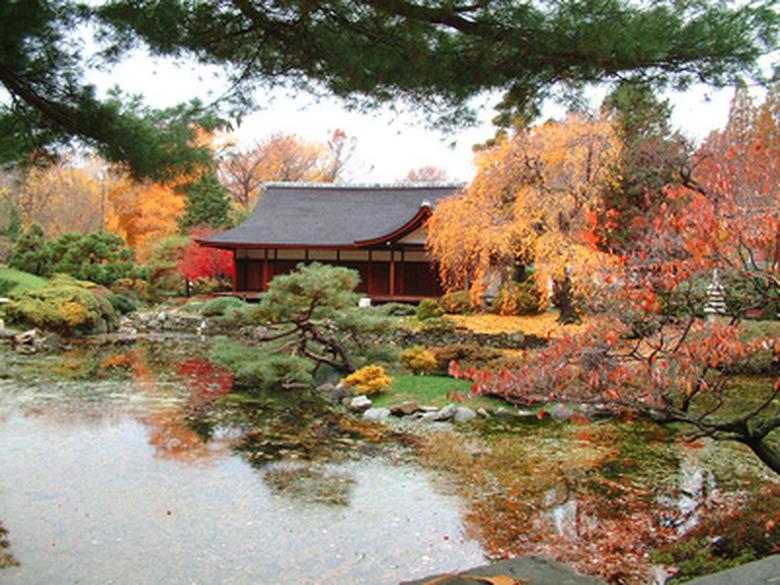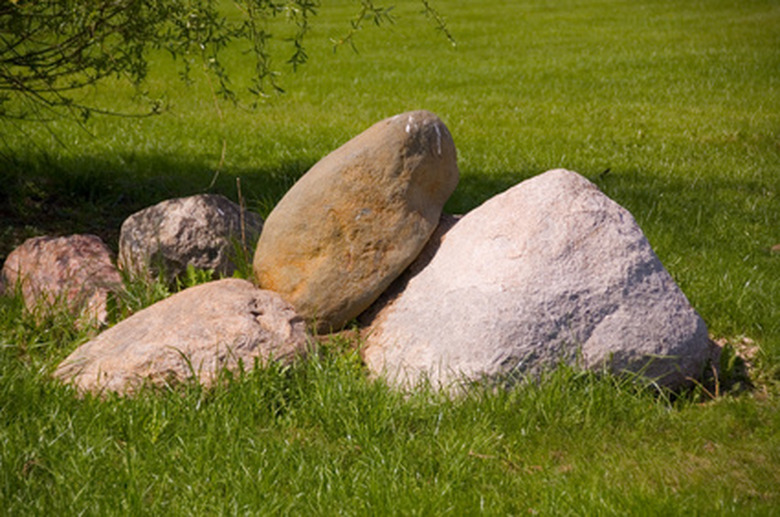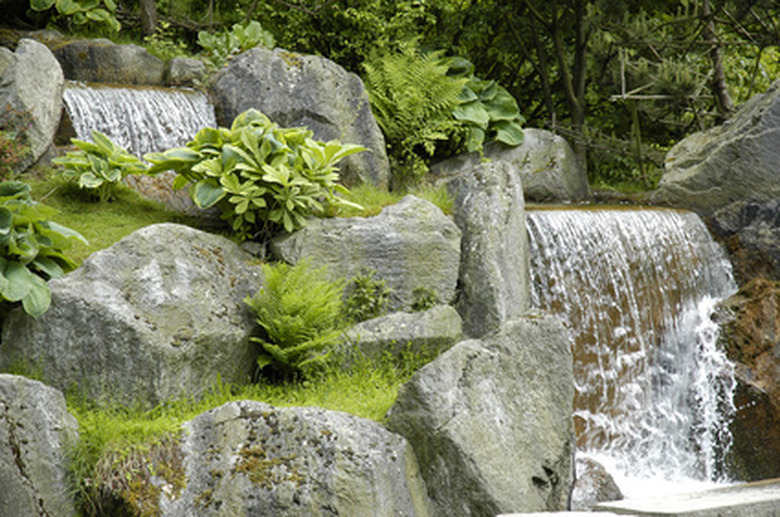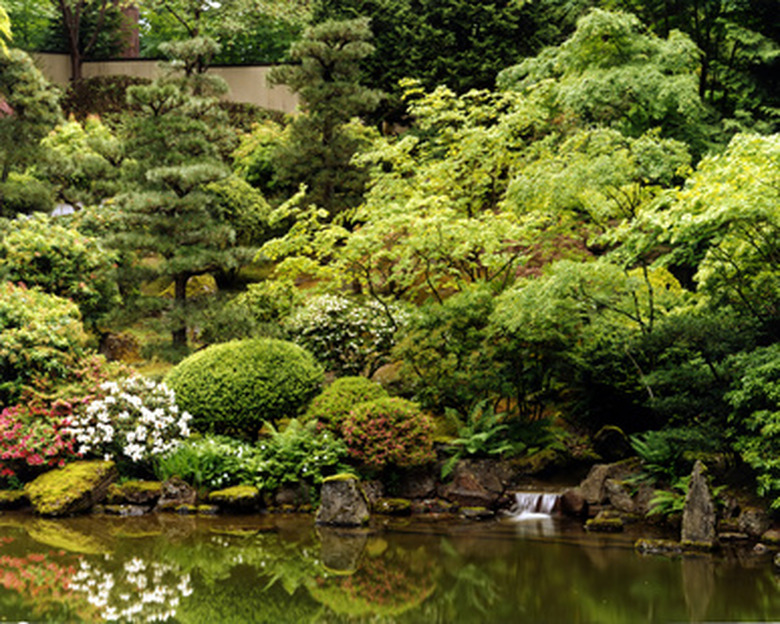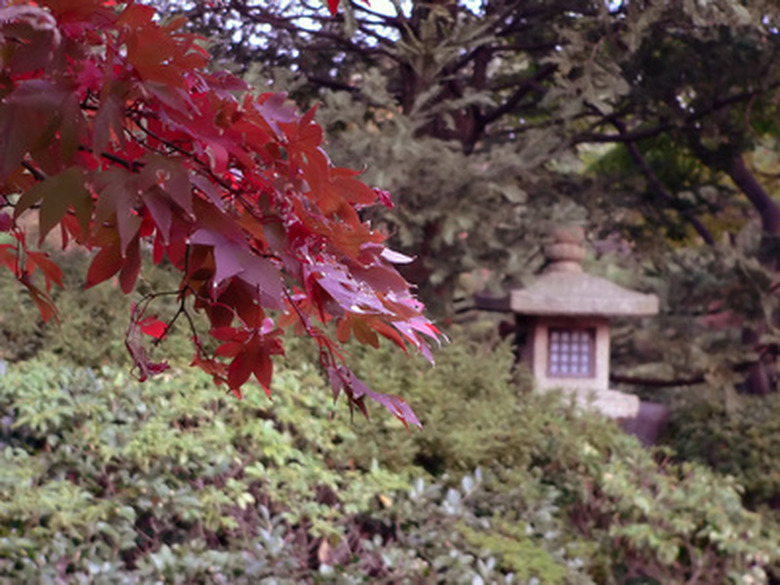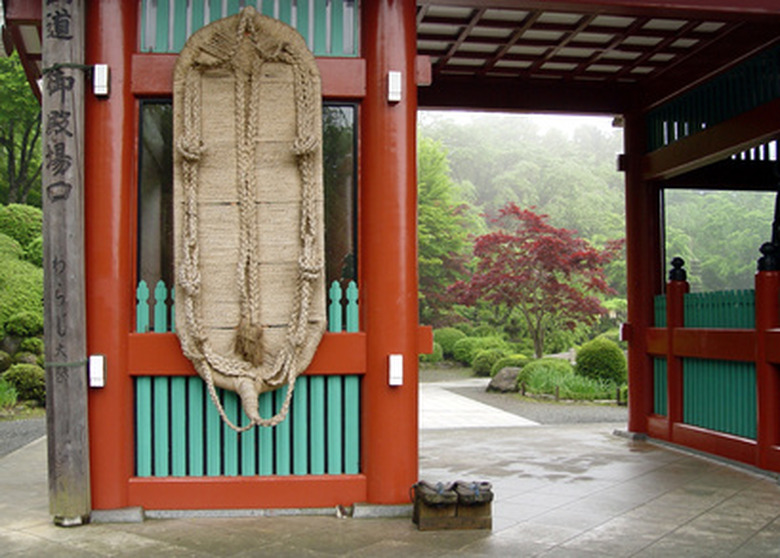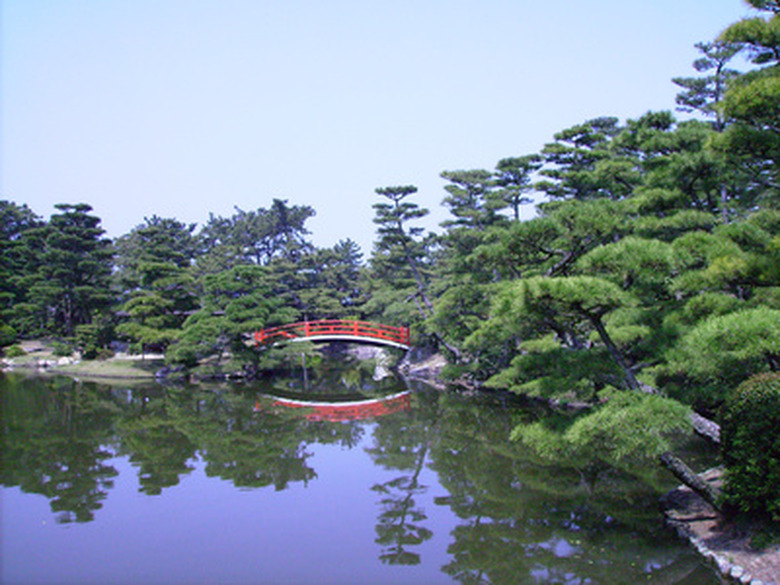Elements Of A Zen Garden & Their Meaning
Zen Buddhism is dedicated to the study of nature and humanity's place in the world. Japanese Zen gardens capture the philosophy of making a peaceful way. Attaining enlightenment by regular practice of Buddhist concepts may be doable, but for those who need a moment now and then in serene places to invigorate the soul, few places can match the setting of a Japanese garden. Within its boundaries, rock, stone, plants and water combine to still the mind.
Ishi
Ishi
Rocks, or ishi, are foundational items in Japanese gardens. They typically represent mountains, but may also symbolize the figure of Buddha, or a gesture of strength and power. At many gardens, the entries are marked by a large stone, as a sign of welcome. Stones figure into the water elements and are sometimes used in forming paths. When water is not available, sand or small white pebbles are substituted to symbolize the space often held by water.
Mizu
Mizu
A vital element to life, mizu, or the water element, is found as ponds, streams, and waterfalls. Sometimes a small fountain designates the water element. Water is for purification and cleansing. When peering at or walking beside a pond in a Zen garden, the stillness and empty space are important for reflection in a literal sense. Meditation is the literal meaning of the word Zen, and water is a superb conduit for such practice. Falls have several symbolic overtures, and dripping indicates the passage of time.
Shokobutsu
Shokobutsu
Care is given in selecting the plantings, or shokobutsu, for a Japanese garden. Cherry trees, with their delicate pink flowers in spring, are a well-loved feature tree. Also often found are plum trees, different pines and bamboo. The sound of wind in bamboo and its motion teach the Zen principle of the "empty heart," providing strength through flexibility. The layout and groupings of plants must be subtle and pleasing, all year round.
Tenkeibutsu
Tenkeibutsu
Lanterns are used as symbols of enlightenment. They are one form of tenkeibutsu, or ornamentation. Others might include frogs, basins and gates. Statues of the Buddha may be present, or of other deities, and a garden's teahouse might have a painting of carp or mandalas. Deeply traditional gardens will keep ornamentation to a minimum, and every item has a clear purpose.
Shakkei
Shakkei
To support the interconnectedness of all in existence, shakkei, or borrowing pre-existing scenery, is applied. The garden itself takes up a certain amount of land, but beyond its perimeter there might be hills or valleys, or something to frame with plants or structures within the garden's walls. The attentive garden designer will seek out how to blend with the near, far, high and low surroundings proportionately and gracefully.
Hashi
Hashi
Hashi, or bridges, are constructed in the Zen garden to symbolize a person's journey between the planes of existence, the inner and outer, the multiple dimensions beyond and the place that lies between worlds. Man's unity with nature can be symbolized by his simple walking across a bridge to move from the world of humans into the wider world of all forms and beings. For the visitor to any Japanese garden, the bridge and all other elements present, may simply allow a moment of harmony and appreciation for what is.
